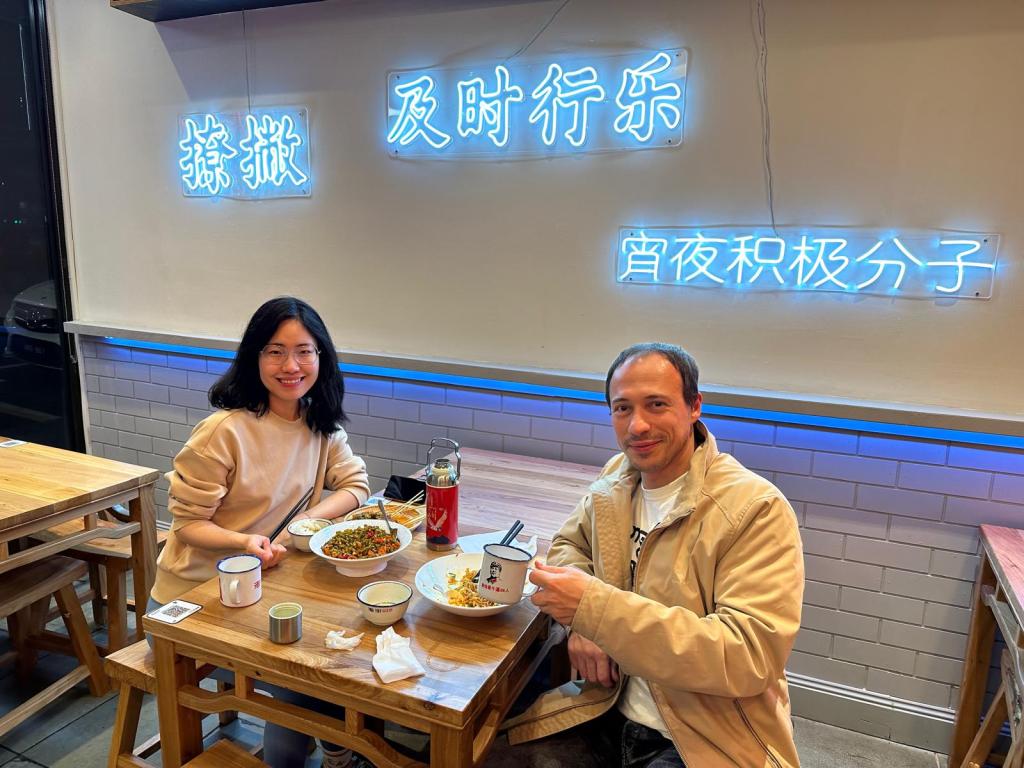Australian fintech start-up WAIWIN is tackling Thailand’s payments problem – and is raising $4.7 million to do take it across Southeast Asia.

Two years ago, George Lipinski was taking a break in Thailand after selling his previous edtech venture. He decided to visit a night market in Chiang Mai, and encountered a problem: he had no cash on hand, and every vendor only accepted PromptPay, Thailand’s ubiquitous QR-code payment system linked to local bank accounts. As a foreigner, he was locked out.
“I stood there awkwardly, unable to buy anything,” Lipinski says. “That’s when a local friend offered to help. He said, ‘Just send me a photo of the vendor’s PromptPay QR code, and I’ll pay for you.’ It worked perfectly and in that moment, something clicked. You’re surrounded by incredible local food and culture, but unable to fully participate because you don’t have access to local payment systems.”
This experience highlighted a systemic problem faced by millions of visitors each year: travellers were excluded from the payment infrastructure that powered everyday life in Thailand.
That moment led to the creation of WAIWIN, a cross-border payments startup co-founded by Lipinski and Lili Wang that has secured $300,000 in angel investment and just opened a US$4.7 million Series A round to expand its offering across Southeast Asia. The company positions itself as the first in the world to connect international travellers directly to local QR-code payment systems like PromptPay, which dominate in countries such as Thailand, Vietnam and India but remain inaccessible to foreigners.
The scale of the problem is considerable. Thailand welcomed around 37 million international visitors annually before the pandemic, and Bangkok is consistently ranked the world’s most visited city. Yet those travellers, including long-term digital nomads, have had no access to PromptPay and have been forced to rely on cash withdrawals. With ATM fees rising – Kasikornbank, one of Thailand’s largest banks, now charges foreigners 250 Baht (around A$12) per withdrawal (and Lipinski says the Thai government reportedly brings in about US$500 million in revenue from ATM fees each year) – the issue is becoming more acute.
“For most Thais, PromptPay is so seamless and deeply integrated into their daily life that it’s easy to assume everyone can use it, including tourists,” Lipinski says. “From the traveller’s side, people often just find workarounds, like carrying cash or relying on friends, so the frustration isn’t always vocalised or addressed at scale. But with more travellers expecting cashless, app-based payments like they use at home, the gap is becoming more obvious.”
WAIWIN’s model combines technology with a community-powered network. Travellers deposit Thai Baht into the app through international money transfer platforms such as Wise, Revolut, Remitly or PayPal. At checkout, they scan a vendor’s PromptPay QR code. A network of more than 400 ‘Thai Trusted Locals’ receives a notification and can accept the transaction. The local pays the vendor using their own PromptPay account and is reimbursed through WAIWIN, earning a commission in the process.
“We used to meet with customers and their families and they invited us for dinner in their homes, and we got to know them personally and deeply understand our customers and what they needed,” Lipinski says. “Much like the rideshare economy, we knew that to succeed, we had to earn their trust. That meant being completely transparent, paying people on time, offering 24/7 customer support, and maintaining an open line of communication. We still constantly speak with our TTLs, listen to their feedback and make improvements.”
For Wang, who grew up in China where AliPay and WeChat Pay dominate everyday transactions, the opportunity was clear from the outset. “It wasn’t just a payments problem, it was a user experience problem,” she says. “If we could make it as easy for tourists to scan and pay as it is for locals, we could unlock a massive opportunity.”
The approach has begun to gain traction. WAIWIN reports more than 3,000 users from over 70 countries, including hundreds of Australians, with hundreds of new signups each day. A viral Instagram Reel by a Russian traveller describing her experience with the app generated more than nearly 800,000 views, helping to fuel adoption.
The Series A raise will be used to expand engineering capacity, deepen regulatory compliance and prepare for entry into new markets including India, Vietnam, Malaysia, the Philippines, Mongolia and Kenya. Collectively, these destinations attract more than 130 million visitors annually and rely heavily on domestic QR payment systems.
“We’re also investing in partnerships, regulatory compliance, and localised user experiences to ensure we’re solving real problems for both travelers and local partners in each market,” he says. “The goal for WAIWIN is to become the go-to cross-border payment layer that makes local QR payments accessible to anyone, anywhere.”
Looking ahead, Lipinski says WAIWIN could eventually eliminate the need for travellers to carry cash altogether. “Locals already live in a cashless and cardless economy,” he says. “Travellers should be able to land in a country and live like a local from the moment they arrive. No cash, no cards, no friction.”
Look back on the week that was with hand-picked articles from Australia and around the world. Sign up to the Forbes Australia newsletter here or become a member here.

